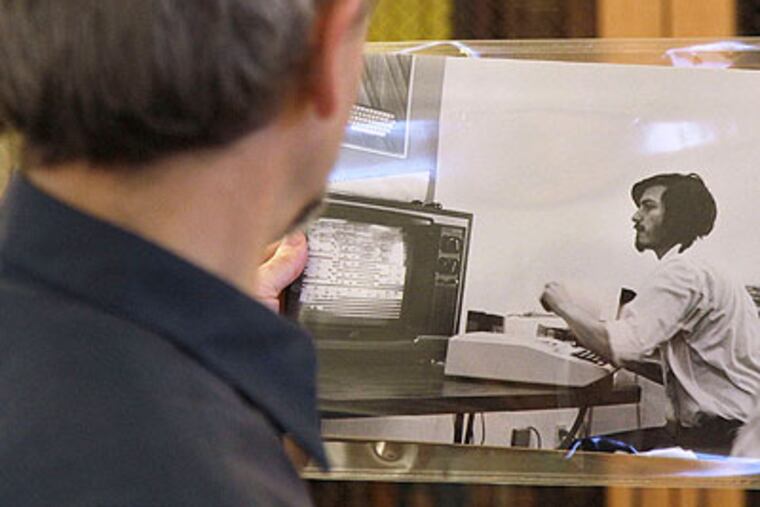Archives feature how firm started up
PALO ALTO, Calif. - A mid-1980s in-house video shows Steve Wozniak and Steve Jobs recalling a seminal point in Silicon Valley history: the moment about 35 years ago they named their upstart computer company - destined, as it turned out, to become a tech behemoth.

PALO ALTO, Calif. - A mid-1980s in-house video shows Steve Wozniak and Steve Jobs recalling a seminal point in Silicon Valley history: the moment about 35 years ago they named their upstart computer company - destined, as it turned out, to become a tech behemoth.
"I remember driving down Highway 85," Wozniak says. "We're on the freeway, and Steve mentions, 'I've got a name: Apple Computer.' We kept thinking of other alternatives to that name, and we couldn't think of anything better."
Adds Jobs: "And also remember that I worked at Atari, and it got us ahead of Atari in the phone book."
The video was among a storehouse of materials Apple had been collecting for a company museum. But in 1997, soon after Jobs returned to Apple, officials contacted Stanford University and offered to donate the collection to the school's Silicon Valley Archives.
Within a few days, curators were at Apple headquarters in Cupertino, packing up two moving trucks full of the documents, books, software, videos, and marketing materials that now make up the core of Stanford's Apple Collection, a trove of insights for historians, entrepreneurs, and policymakers.
"Through this one collection, you can trace out the evolution of the personal computer," said Stanford historian Leslie Berlin. "These sorts of documents are as close as you get to the unmediated story of what really happened."
The collection is stored in hundreds of boxes taking up more than 600 feet of shelf space at a climate-controlled warehouse on the outskirts of the San Francisco Bay area.
Interest in Apple and its origins has grown dramatically since Jobs died in October at age 56, just weeks after he stepped down as CEO.
"Apple as a company is in a very, very select group," said Stanford curator Henry Lowood. "It survived through multiple generations of technology. To the credit of Steve Jobs, it meant reinventing the company at several points."
The collection includes early photos of Jobs and Wozniak, blueprints for the first Apple computer, user manuals, magazine ads, TV commercials, T-shirts, and drafts of Jobs' speeches. Also:
A company video spoofing the 1984 movie Ghostbusters, with Jobs and other executives playing "Blue Busters," a reference to rival IBM.
Handwritten financial records showing early sales of the Apple II, one of the first mass-market computers.
An April 1976 agreement for a $5,000 loan to Apple Computer and its three cofounders: Jobs, Wozniak, and Ronald Wayne, who pulled out of the company less than two weeks after its founding.